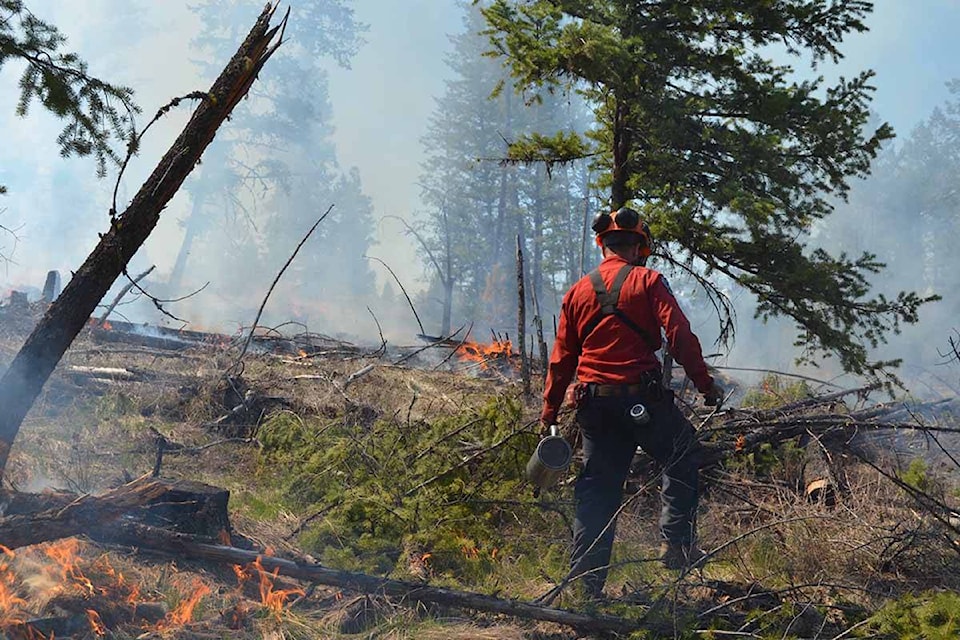As temperatures rise in Revelstoke, so does the risk of wildfires in the region.
Following last years historically devastating wildfire season, the Southeast Fire Centre is preparing for this year’s season using precautionary prevention methods such as prescribed burning as a fuel mitigation method.
Carlee Kachman, a fire information officer with the Southeast Fire Centre, says prescribed burning not only minimizes the possible spreading of fires in an area, but also allows for more effective fire fighting to take place.
“By conducting these fuel management treatments, any future fires in that area would have less fuel to burn, and it would burn with less intensity as well,” says Kachman. “It also creates a defensible space that our crews could work out of, and air support is way more effective because there’s less fuel to burn.”
Prescribed, or controlled, burns are heavily dependent on the weather, as plans cannot be carried out unless weather and moisture conditions, as well as resources and staffing requirements, meet qualifications on a given day.
“If there is a window for burning that is safe and if we’re able to burn in that situation and it would meet the objective that we have set out, then we will do so,” says Kachman. “There are so many factors that go into prescribed burns.”
Spring is the ideal season for carrying out prescribed burns in the region, as cooler temperatures and higher levels of moisture allow for controlled burning to be carried out with greater precision. Summer months are dedicated more to wildfire suppression.
This year to date, the Southeast Fire Centre has carried out four prescribed burns within their jurisdiction, which covers from the U.S. border in the south to the Mica Dam in the north, and the Okanagan Highlands and Monashee Mountains in the west to the Alberta border in the east.
Kachman says prescribed burning is also important to ensure the natural benefits of fire in an ecosystem stay in play.
“Fires are often extinguished before they spread over large areas of land in accordance with the fire management plan,” explains Kachman. “So this does eliminate fires natural purpose in the ecosystem, which can lead to fuel loading, and this increases the likelihood of intense fires in the area and creating a destruction of any values on that landscape. So prescribed burning reintroduces fire back into that landscape and creates great benefits for local ecosystems.”
Last year, the B.C. Government reported 1.2 million hectares of land burned by wildfires with a total fire suppression cost of over $568 million. As a result, 65,000 people had to be evacuated.
RELATED: BC Wildfire Service thanks public for support during 2017 wildfire season
Kachman urges everyone to be considerate and careful when using fire this season, taking into consideration campfire restrictions, weather and wind conditions and suppression options any time a fire is lit.
“Any time that you are intending to use fire, be mindful about what is allowed and the proper ways in order to do so,” says Kachman.
For more information on fire prevention and responsible fire use, visit firesmartcanada.ca.
To report a wildfire, unattended campfire or open burning violation call 1-800-663-5555 or dial *5555 on a cellphone.
@NathanKunz1
nathan.kunz@revelstokereview.com
Like us on Facebook and follow us on Twitter.
